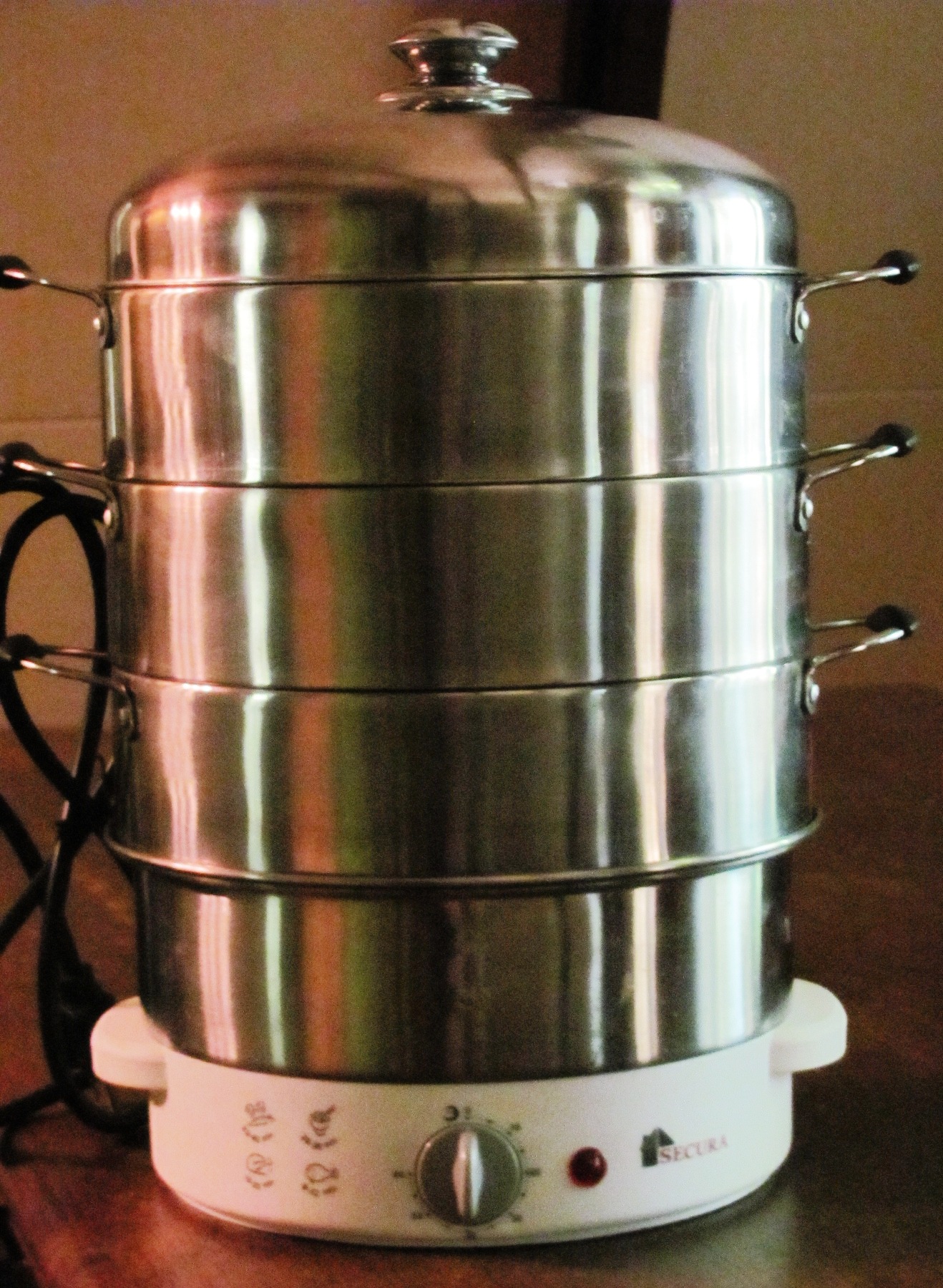- Home
- Non Toxic Food
- Avoiding Plastic
Avoiding Plastic
OK people. It’s time to get serious about avoiding plastic. Why? Because based on decades of research - there’s no such thing as nontoxic, safe plastic.
Top Tips For Avoiding Plastic
Identifying why you need to avoid plastic is the easy part. Avoiding plastic in a world that’s full of it is not easy. But you can at least reduce your exposure to toxic plastic. And when it starts to get difficult just remember – There’s no such thing as Nontoxic Plastic.
Let’s start with some important sources of plastic chemical exposure – Food, Water and Your Home.
Food Prep and Storage
When you open your kitchen cabinets does a bunch of plastic containers and lids come tumbling out? If so, this is a good place to start. It’s also one of the easiest ways to avoid plastic because there are plenty of better options.
When you open my kitchen cabinets you’ll find lots of different sizes of Pyrex and wide-mouth canning jars with stainless steel lids (wide-mouth are easier to clean and fill). Also, 3 glass measuring cups – 2, 4 and 6 cup – that I use for meal prep and mixing.
But NO plastic.
I’ve lived in several different tiny spaces for about 5 years. So, everything I have needs to be ultra functional, especially in the kitchen. You can bake, heat and freeze in Pyrex and canning jars.
Stainless Steel Food Storage Containers with Silicone Lids are also a good option. Be sure to purchase high quality, food grade 304 stainless steel of 18-8 or 18-10 quality. The other things I use, mainly for freezing, are tinfoil and Instead of Ziploc plastic bags try Reusable Silicone food storage bags.
Replace plastic wrap with Bee's Wrap food wrap. I also have some Silicone stretch lids for covering items in the fridge.
Just don’t heat or bake anything in silicone. Based on research I’ve read so far, when used at temperatures above 200° F silicone cookware releases VOCs into your air and siloxanes into your food.
Fresh Produce
Buy loose unpackaged fresh produce and bring it home in organic cotton produce bags. These allow the cashier to see the item you are purchasing through the bag and they keep your produce fresh longer because they allow the items to breathe.
FYI – It’s hard to find loose organic produce. It’s usually packaged in plastic. Go figure!
Cheese and Meats
On the surface the solution for avoiding plastic for cheese and deli meats would be the deli counter. Getting the deli clerk to slice up what you want and bringing your own container or beeswax wrap.
Well, I don’t know about you guys, but when I stand at the deli counter of every grocery store I’ve ever been in, all I see are rows of deli meat and cheese wrapped in – wait for it- PLASTIC!
So, the damage has been done. I don’t eat lunch meat but I still haven’t found a good solution for cheese, except to befriend a cheese maker.
Condiments, Sauces, Salad Dressings, Nut Butters, Jams, Honey, etc
This change is all about compromise. Your favorite brand of mustard probably comes in a plastic container. Well, it’s time to suck-it-up and find a mustard you like in a glass jar.
You should be able to find glass packaged substitutes for all the items in this category. This is especially important for acidic items, such as anything that contains vinegar and tomatoes.
Surprisingly though, I’ve had to forgo buying many organic condiments and nut butters because they use plastic. I always go with nonorganic in glass jars and bottles.
Frozen Food
If you’re a fan of pre-packaged frozen food you can’t avoid plastic. Your only option is to freeze your own fruits and veggies.
It’s not as time-consuming as it sounds. When you’re chopping up produce for a recipe just chop some extra to freeze. And every time you make a batch of something – from steel cut oats to farro and veggies – freeze individual portions in canning jars for ready-made meals.
And if you do regularly shop the frozen aisle, I’m a big fan of frozen veggies, console yourself with the knowledge that for the entire length of their journey from food processing plant to grocery store they are kept frozen.
So, temperature is not a factor in leaching. Also, I found one study that tested the leaching of endocrine disrupters from frozen produce bags and did not find any.
Just don’t cook ANYTHING in the container it comes in. Empty the contents into glass or stainless to heat.
Processed and Prepared Food
Grocery stores have aisles and aisles of processed food like cereals, macaroni and cheese, brownie mix, and bread that come packaged in plastic. To avoid all that plastic you have a couple of choices.
First, for your health, cut back on processed and prepared foods with their long list of unnatural ingredients.
Second, some of these items can be created from scratch using the base ingredients purchased in bulk or in glass containers. Get a good Meals In A Jar Cookbook, set aside some time and have fun stocking your pantry with healthy convenience meals in canning jars.
Third, since convenience and time savings make processed foods so appealing, be smart about your choices. Pick the healthiest options and shop the natural and organic section of your supermarket.
Also, you can check with your supermarket about the prepared foods made directly on site at the grocery store. See if any can be purchased without plastic.
Bread would be a good example. Bring your own bread bag or ask for a paper bag.
Beverages in Plastic Bottles
Beverage bottles are also made of PET and numerous studies have documented the leaching of plastic chemicals from PET bottles into water and soda.
Storage time, storage temperature and acidity all play a role in the toxins that leach from plastic beverage bottles. Does it sound like a good idea to you to put acidic fruit juices and tomato juice in plastic bottles? Or transport beverages in trucks on hot summer days?
A 2018 study found high levels of DEHP and DMP phthalates that leached into plastic bottles of Coke. The study also reported heat and longer storage of soft drinks in plastic increased the content of leached phthalates in the drinks.
The solution to avoiding plastic bottled water is to invest in a good water filter (I use the Big Berkey) and some non toxic water on the go bottles. At home, try fruit-infused home-filtered water. I like to pour filtered water into a gallon infuser and add organic lemon slices and strawberries.
For fruit and vegetable juice, look for brands that use glass bottles. My personal preference is juice made by Santa Cruz Organic, Lakewood and R.W. Knudsen. If your local grocery store doesn’t carry these brands, they are available here.
The best way to avoid the plastic chemicals in soda bottles is to stop drinking soda. For better options check out Top 10 Reasons To Stop Drinking Soda.
Avoiding Plastic In Your Home
Leaching from plastic food and beverage containers isn’t the only way your exposed to plastic chemicals. There are quite a few plastic items you use that are a source of indoor air pollution and toxic dust bunnies.
This is especially true of products like plastic shower curtains, table clothes, flooring and pillow and mattress protectors.
These products, made from PVC (polyvinyl chloride), off gas toxic chemicals like phthalates and the carcinogen vinyl chloride.
To avoid vinyl in your home, choose cloth shower curtains and table clothes. And definitely invest in cotton, organic is best but expensive, or wool pillow and mattress protectors. You don’t want to be seeping on vinyl, EVER!
And instead of vinyl flooring opt for natural linoleum and ceramic tile.
Please don’t forget about all those plastic storage containers in your home. As they degrade, they release plastic chemicals into your air and the products stored in them, like your clothes and bedding. Sunlight from a window or high heat in a garage accelerates the release.
My cheap solution for storage is tough cardboard produce boxes from markets, restaurants and grocery stores. Or you can buy them here. I’ve been using the same ones for the past 15 years and there’re still in great shape.
And they fit great under beds. To keep dirt and dust out I place then in canvas laundry bags.
Another option is to buy cloth zippered containers and place cardboard boxes inside to give them structure.
Let's face facts. Avoiding plastic is difficult. And avoiding all plastic is impossible. But you can reduce your exposure to plastic chemicals. For more great options for avoiding plastic check out the following posts.




